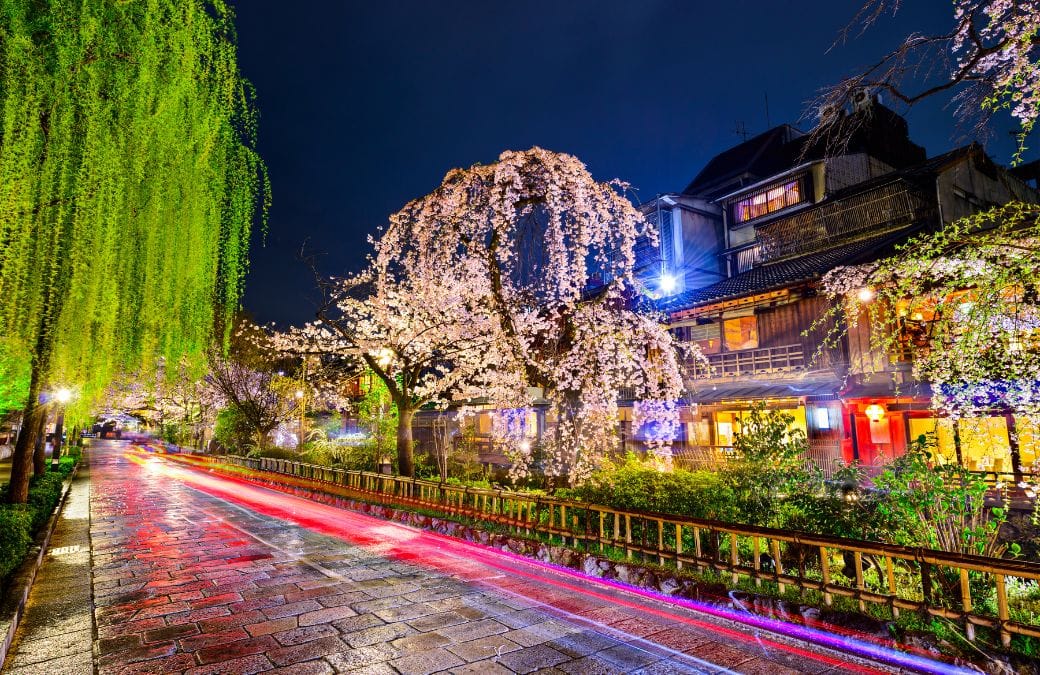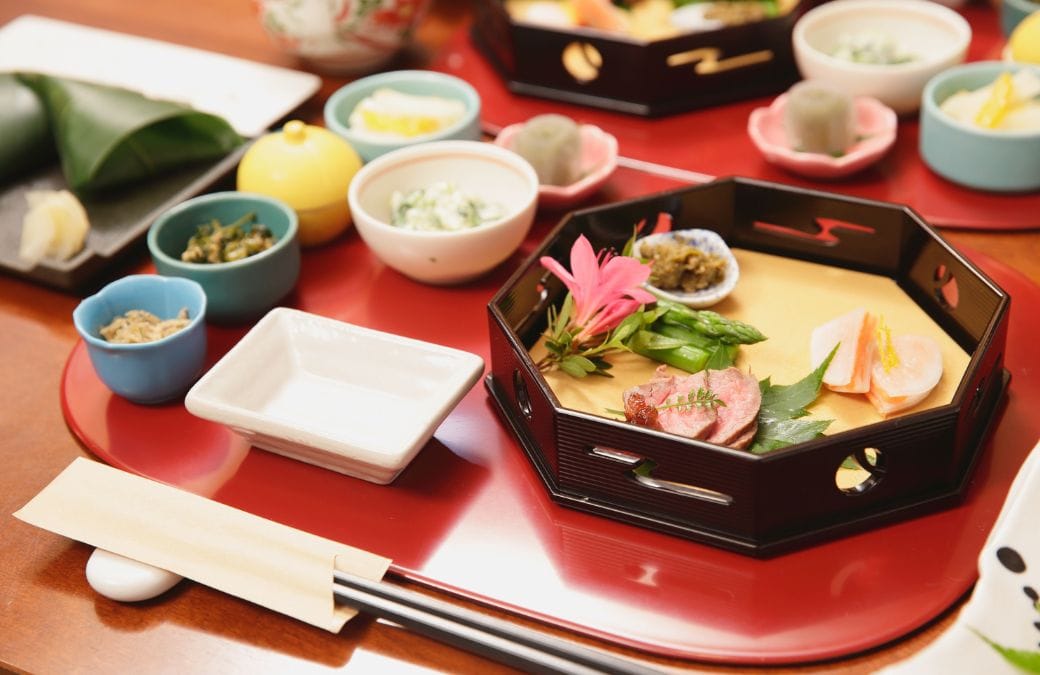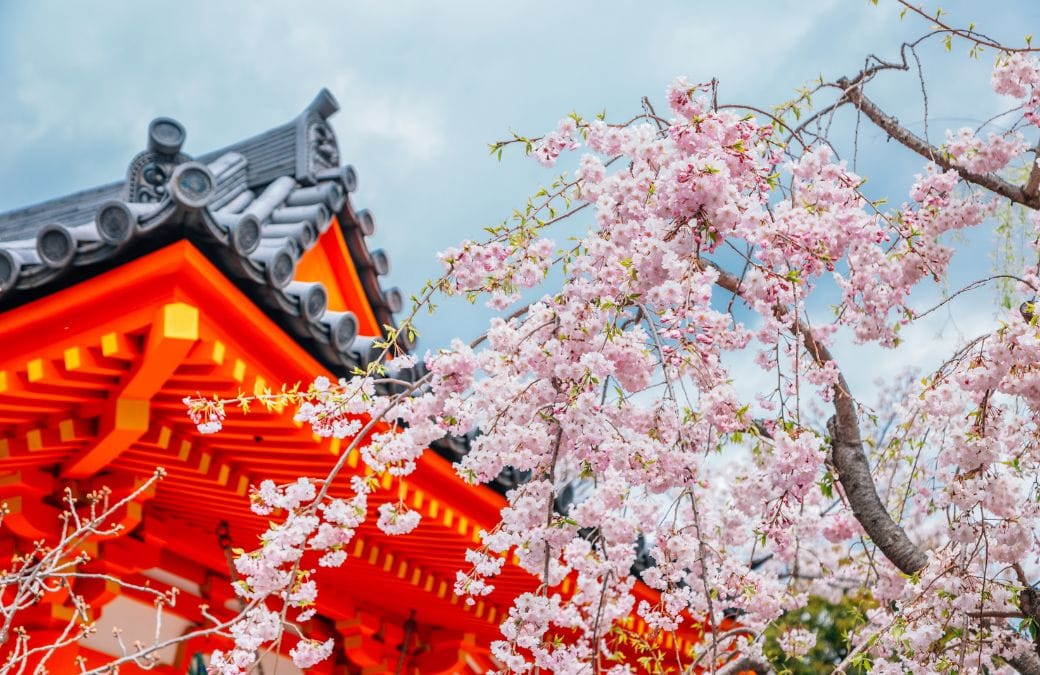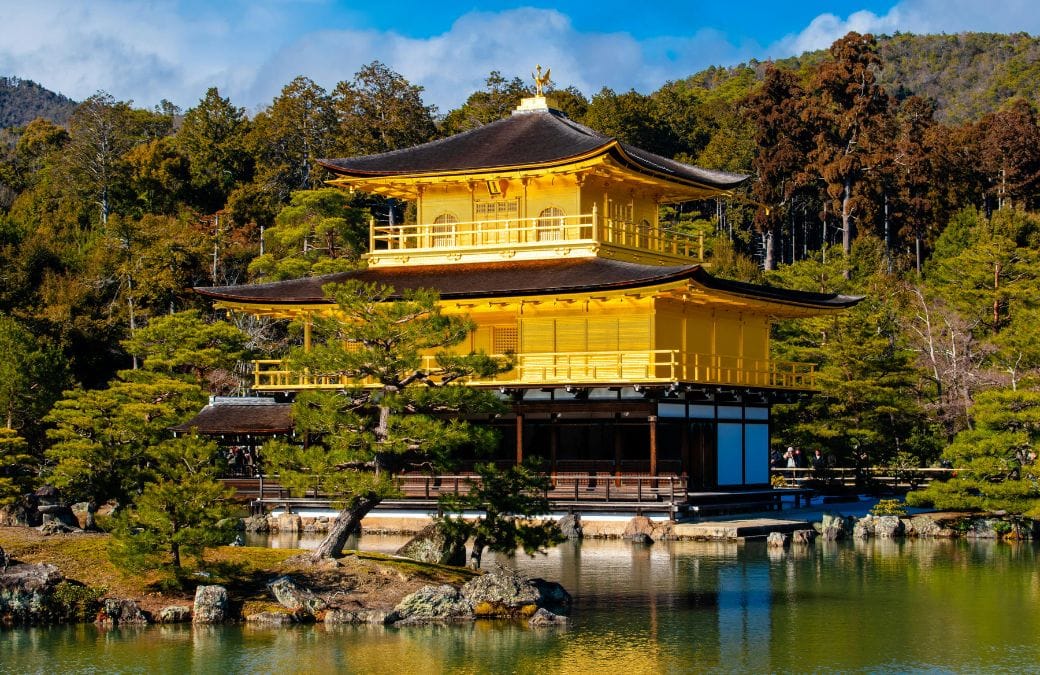Where Ancient Japan Lives and Breathes
The first rays of dawn paint Kinkaku-ji temple gold – not metaphorically, but literally, as sunlight catches the gold leaf that covers this ethereal pavilion. Its reflection shimmers in the surrounding pond like a vision from another world. You’re alone except for a gardener, methodically raking gravel into perfect lines. This is Kyoto at its most sublime: a living museum where every stone, every gesture, every silence holds centuries of meaning.
In a world racing towards tomorrow, Kyoto stands still – not frozen, but poised in elegant equilibrium between past and present. This former imperial capital doesn’t just preserve Japanese culture; it breathes it, lives it, and invites you to step inside its timeless embrace.
The Sacred Geography of Wonder
Kyoto holds over 2,000 temples and shrines, but numbers fail to capture their cumulative effect on your soul. Each sacred space offers a different dialogue with the divine. At Fushimi Inari, thousands of vermillion torii gates create tunnels of colour that wind up the mountainside. Start your ascent at dawn, before the crowds arrive, and you’ll understand why foxes – the shrine’s guardian spirits – chose this mystical place. The gates frame glimpses of the city below, each view a perfectly composed painting.
Then there’s Kiyomizu-dera, its wooden stage jutting out over the hillside like a declaration of faith. The temple was built without a single nail, held together by traditional joinery that has survived earthquakes and wars. Stand on its famous platform and look out over Kyoto’s sea of grey-tiled roofs. In spring, clouds of cherry blossoms soften the view. In autumn, maple leaves set the hills ablaze with colour.
But perhaps the most profound experiences await in Kyoto’s Zen gardens. At Ryoan-ji, fifteen rocks rest in a sea of raked gravel. No matter where you sit, you can only see fourteen – the fifteenth reveals itself only when you achieve enlightenment, or so the monks say. Sit on the wooden veranda and let your mind empty. Time dissolves. This is meditation made manifest in stone and space.

The Floating World of Gion
As dusk falls, make your way to Gion. These narrow streets, lit by paper lanterns, belong to another era. Traditional machiya townhouses line the lanes, their wooden facades hiding exclusive tea houses where geisha still entertain. If you’re fortunate, you might glimpse one hurrying to an appointment – the rustle of silk, wooden geta sandals clicking on stone.
But don’t chase or photograph them. Instead, book an evening at a traditional ochaya tea house where you can experience geisha culture with respect and authenticity. Watch as a maiko (apprentice geisha) performs the tea ceremony with movements so precise they become poetry. Her every gesture – the fold of cloth, the whisking of matcha, the bow – has been refined over centuries. This is cultural DNA made visible.
Wander deeper into Gion as night falls. Soft shamisen music drifts from behind sliding doors. The scent of grilling yakitori mingles with expensive perfume. In tiny bars with just eight seats, bartenders in bow ties craft whisky highballs with the precision of samurai. This is where Kyoto’s traditional and modern souls merge most seamlessly.

Rituals of Transformation
To truly understand Kyoto, you must participate, not just observe. Begin with the tea ceremony – not the tourist version, but an intimate session in a private tea house. The ritual seems simple: making and serving tea. But within this simplicity lies profound philosophy. Every movement has meaning. The placement of each utensil follows rules older than most nations. As you kneel on tatami mats, struggling to fold your legs properly, you begin to understand that the ceremony isn’t about tea at all. It’s about presence, respect, and finding beauty in restraint.
Transform yourself literally with a kimono experience. The elaborate dressing process – layer upon layer, each tied just so – is a ritual in itself. The obi belt alone requires an engineering degree to tie properly. Once dressed, you’ll discover that kimono changes how you move, how you sit, how you exist in space. Suddenly, the mincing steps of geisha make sense.
For a different immersion, join a kaiseki cooking class. This haute cuisine transforms seasonal ingredients into edible art. Learn to slice vegetables into cherry blossom shapes, to balance colours and textures on handmade ceramics, to present food as poetry. Your instructor, likely trained for decades, will teach you that in kaiseki, the space between elements matters as much as the elements themselves – a philosophy that extends far beyond the kitchen.

Seasons of the Soul
Kyoto reshapes itself with the seasons, each transformation offering different revelations. Spring’s cherry blossoms are justly famous – two weeks when the entire city turns pink and parties beneath the trees. Join hanami (flower viewing) in Maruyama Park, where families spread blue tarps and share sake as petals drift like snow. But spring also brings fresh bamboo shoots, special wagashi sweets shaped like sakura, and gardens dressed in their finest colours.
Autumn rivals spring for beauty. Momiji – maple leaf viewing – turns temples into galleries of gold and scarlet. At Tofuku-ji, crowds cross the Tsutenkyo Bridge to witness the valley below burning with colour. Visit Kurama-dera temple at night when they illuminate the maple trees, creating a fantasy landscape that seems computer-generated but predates electricity.
Summer brings festivals. During Gion Matsuri in July, massive floats parade through streets as they have since 869 AD. The city becomes a street party where traditional and modern Japan dance together. Winter offers different magic: snow-dusted gardens, hot pot meals in hidden restaurants, and temples almost empty of tourists where you can experience true stillness.

The Art of Wandering
Kyoto rewards the wanderer. Ignore your map occasionally. Duck down that narrow alley. Push through the noren curtain of that tiny restaurant. You might discover a seventh-generation potter throwing bowls in a workshop unchanged since the Edo period. Or a hidden shrine where locals leave offerings of sake for good fortune. Or a kissaten (old-style coffee shop) where time stopped in 1975 and elderly jazz lovers nurse single cups of coffee for hours.
Philosopher’s Path epitomises this wandering spirit. This stone path follows a canal lined with hundreds of cherry trees. Small temples, artisan shops, and cafes dot the route. In spring, it’s magical but mobbed. Visit in early morning or late afternoon when shadows are long and crowds thin. Stop at Ginkaku-ji, the Silver Pavilion, which isn’t silver at all but perhaps more beautiful for its restraint.

Where Tradition Meets Tomorrow
Don’t imagine Kyoto as a museum piece. This city pioneered Nintendo, hosts cutting-edge universities, and boasts some of Japan’s most innovative restaurants. At Kikunoi, chef Yoshihiro Murata serves three-Michelin-starred kaiseki that honours tradition whilst pushing boundaries. In Pontocho Alley, centuries-old tea houses share walls with molecular gastronomy restaurants.
Stay in a ryokan to experience this duality. These traditional inns offer tatami mat rooms, communal baths, and kaiseki dinners served in your room. Yet behind the scenes, heated toilet seats, perfect climate control, and high-speed Wi-Fi ensure modern comfort. Watching the garden from your room, wearing yukata robes, sipping tea from handmade ceramics – you’re living like a 17th-century aristocrat with 21st-century conveniences.
The Return to Yourself
Kyoto changes you. Not dramatically, but subtly, like incense smoke that clings to your clothes. You’ll find yourself walking more slowly, looking more carefully. You’ll notice the play of light on water, the sound of trees in the wind. You’ll understand why Japanese cameras capture such exceptional detail.
This city teaches patience. Waiting for the perfect light at Kinkaku-ji. Sitting through the full tea ceremony. Walking the entire Fushimi Inari trail. In our instant world, Kyoto insists on taking time. And in that time, between one breath and the next, you might glimpse something eternal.
You’ll leave with more than photographs. You’ll carry the memory of morning mist over Arashiyama, the taste of matcha bitter on your tongue, the weight of silk against your skin. Most profoundly, you’ll understand that tradition isn’t about preserving the past – it’s about keeping beauty alive in the present.
Let us craft your Kyoto journey, where every temple visit, every meal, every moment is curated to reveal the soul of Japan. Some destinations you visit; Kyoto you experience.

Ready to embark on your next adventure?
Contact us today to start planning your dream holiday!

